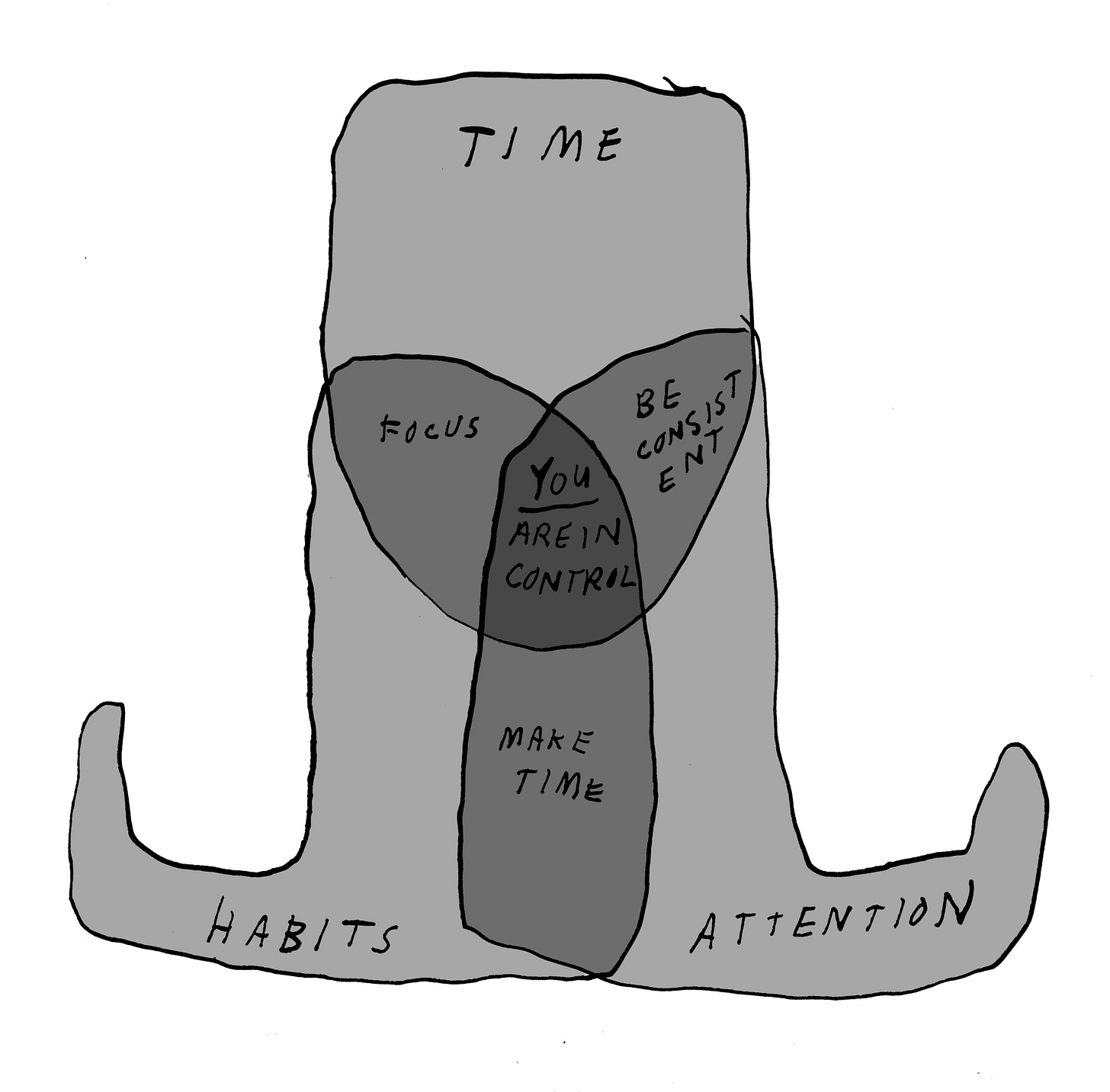The HAT Framework
This is one of the three frameworks I teach in my course, How to be an Artist if You have a Life. Comment waiting list to be notified when the course opens again.
Habits, Attention, and Time
Time, attention, and habits are the essential variables that determine your success as an artist.
Especially as an artist living a complex, busy life. If you cannot control these variables, work, relationships, and everyday responsibilities will destroy your creative energy.
By using The HAT Framework, you can control all three.
It provides the mindset and practical tools to help you manage your time, sharpen your focus, and build habits that support consistency and growth in your art practice.
You will use these skills to minimize distractions, maintain momentum, and fight against entropy—the natural drift into disorder that happens without structure.
Now, you will accomplish more while experiencing a previously unattainable calm and focus.
Let’s jump in.
Part 4: HABITS
Consistent habits = consistent progress. Track and refine your habits to stay intentional and maintain momentum. When life gets complicated, if you continue with the right habits, you will be sure to keep up with the essentials.
Choose Key Habits: Focus on habits that support your goals, like daily studio work, exercise, or limiting social media. Be specific. For example, Draw 30 minutes each morning or no social media before 5 pm.
Use a Habit Tracker: Each day, mark your progress. This provides accountability and is a visual log of your consistency.
Stay Consistent: Regular habits build momentum, most importantly when the rest of life is chaotic.
Part 5: ATTENTION
Your ability to focus determines the quality of your work. Controlling your attention means eliminating distractions and creating an environment that supports your most important work.
Minimize Distractions: Turn off notifications, set your phone to “Do Not Disturb,” and block distracting websites using tools like Freedom.
Use Noise-Canceling Headphones: Silence distractions or play focus-enhancing music, like movie soundtracks or classical. Use the big ones. They are like a Do Not Disturb sign when working in public.
Break Tasks into Steps: Use the "Most Important Next Step" (MINS) approach to make large projects manageable. Break tasks into 20 - 50 minute blocks to create urgency and clarity.
Work with a Plan: Begin each session knowing exactly what needs to be accomplished to avoid wandering into distractions. Be specific. Have a main goal and outline the steps you need to do to accomplish it.
Set a Timer: Use a visual timer to stay focused.
Part 6: TIME
Managing your time effectively ensures you can balance your artistic work with other responsibilities. Planning and prioritization are essential to making the most of your day.
Schedule Everything: Plan your most important work, rest, and personal requirements. It will clarify how little time you have for anything unimportant. It forces you to choose what is important.
Monthly Vision / Daily Plan : Use monthly calendars for big-picture thinking and daily worksheets to focus on immediate priorities.
Avoid Time Creep: Be aware of Parkinson’s Law and set tight deadlines to increase efficiency and focus.
By following The HAT Framework, you’ll create a sustainable structure for your creative practice and make meaningful progress in your art and life.
Action Steps
Define Your Priorities: Identify your top creative and personal goals.
Create a Schedule: Block time for focused work and life activities.
Define your Habit Goals: What tasks will you work on each day? (ex. Writing for 30 minutes immediately after I wake up)
Eliminate Distractions: Use tools like app blockers, timers, and physical boundaries.
Track Progress: Log your habits and wins each month.
Comment waiting list to be notified when this course opens again.


